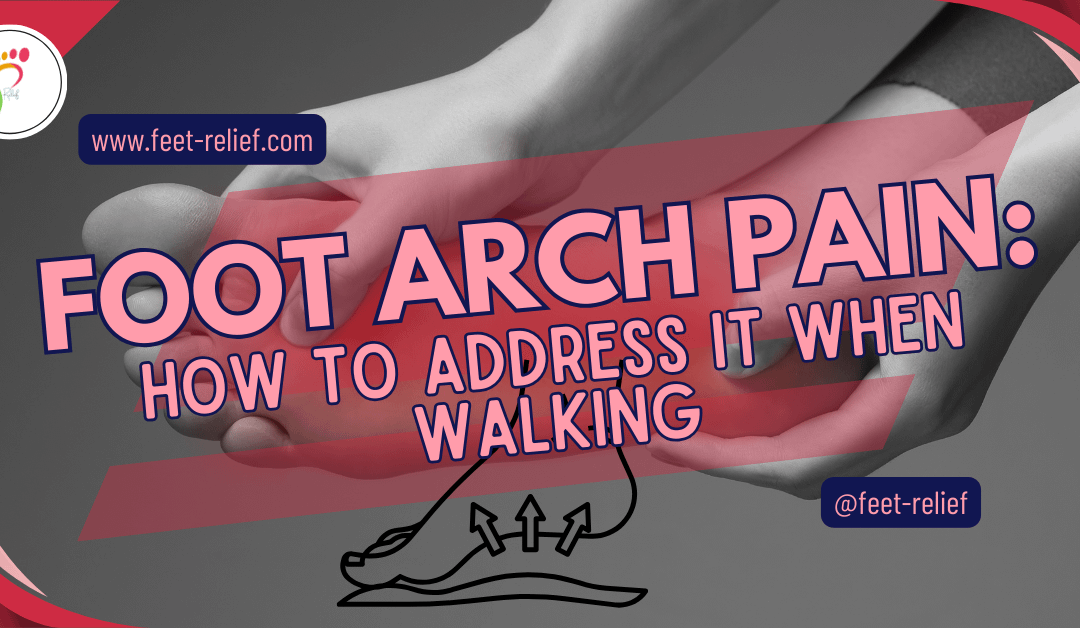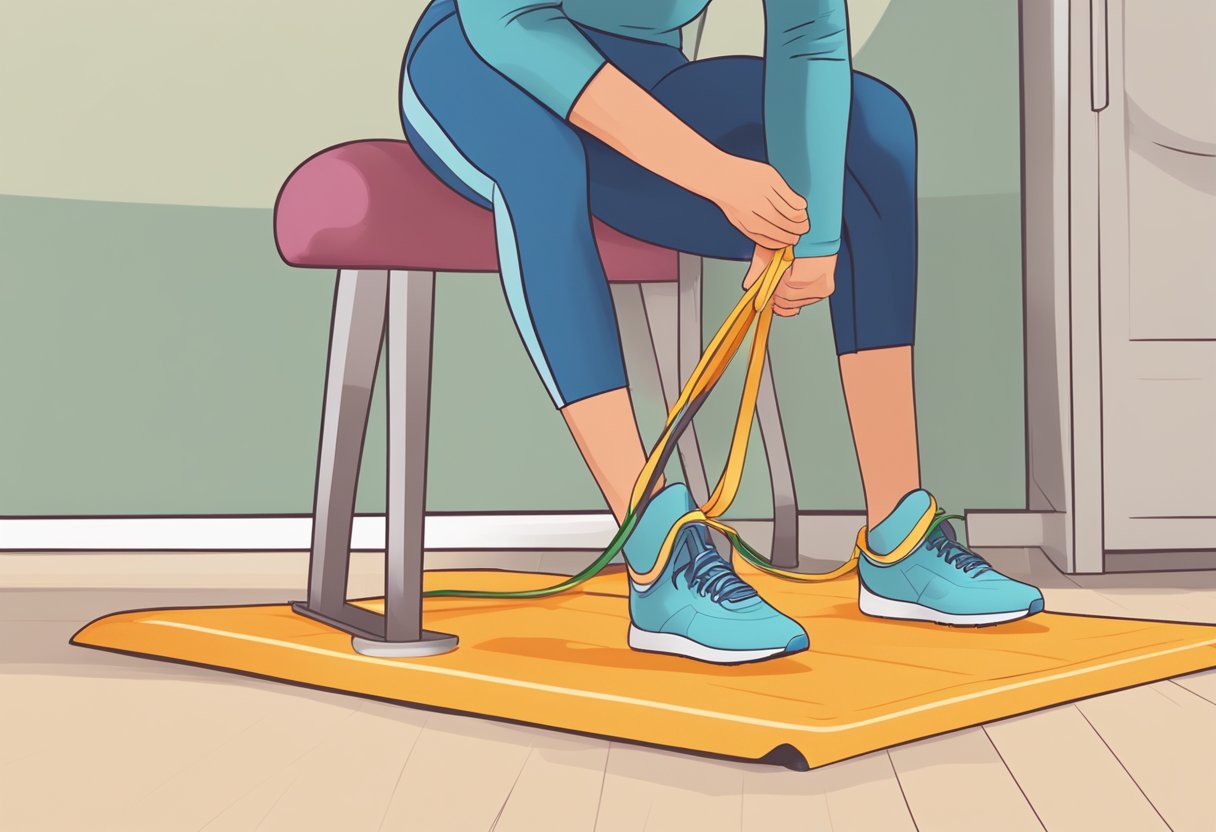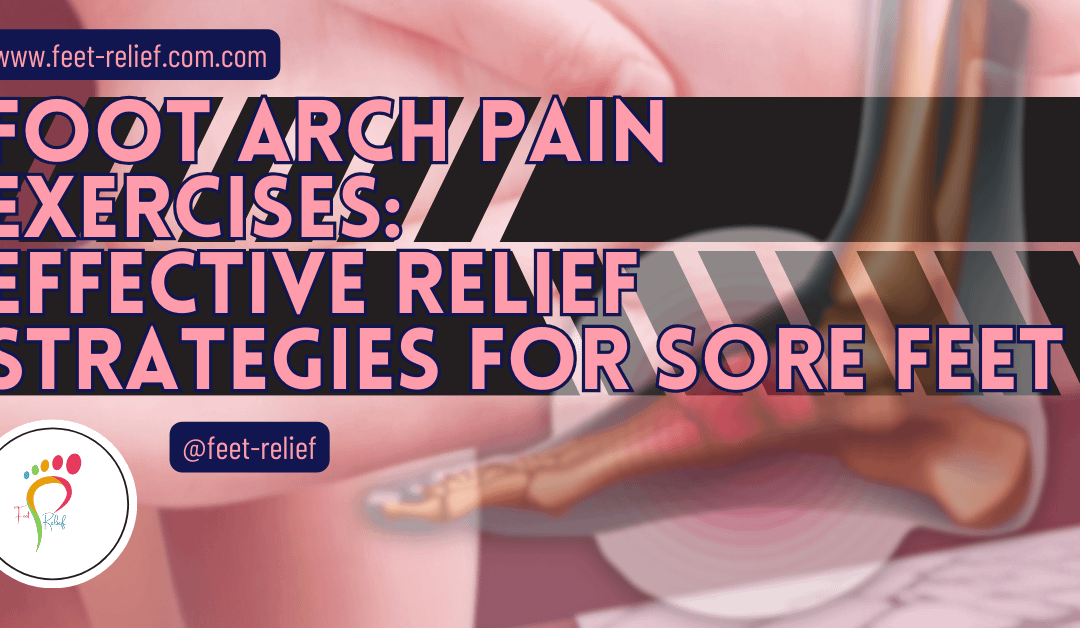
Foot Arch Pain: How to Address It When Walking
Foot arch pain, whether mild or severe, can significantly affect your daily routine and mobility. Navigating through discomfort in the arch of your foot while walking is a common challenge. This pain can stem from a variety of causes, spanning from overuse injuries to inherent structural irregularities like high or low arches. Its intensity may fluctuate, often accompanied by swelling and tenderness, impacting your daily mobility.
The foot’s arch, a complex interplay of bones, ligaments, and tendons, serves to bear your body weight and facilitate balance. Pain signals a disruption, whether from inflammation like plantar fasciitis or structural issues such as flat feet. Resolving the underlying cause is crucial for alleviating discomfort and ensuring long-term foot health.
Foot Arch Pain: Navigating Causes, Symptoms, and Remedies
Experiencing pain in the arch of your foot while walking is not an uncommon issue. It can occur due to various reasons ranging from overuse injuries to structural abnormalities of the foot, like high or low arches. The sensation of pain can vary in intensity and may be accompanied by other symptoms such as swelling and tenderness, impacting your daily activities and mobility.
The arch of your foot, made up of bones, ligaments, and tendons, is designed to support your body weight and assist with balance and walking. When pain arises, it indicates that something is amiss, whether due to inflammation, like plantar fasciitis, or from conditions such as flat feet. Addressing the root cause of the pain is critical for relief and your long-term foot health.

Key Takeaways
- Arch pain while walking can stem from various conditions and has several associated symptoms.
- Accurate diagnosis of arch pain is vital for effective treatment and management.
- Prevention strategies are important for maintaining foot health and avoiding recurring pain.

Understanding Foot Arch Pain
When you experience discomfort in the arch of your foot while walking, it’s important to identify both the type of arch you have and the potential causes of pain. This understanding can guide you toward appropriate interventions and relief.
Types of Foot Arches
Your foot arch type is a key factor in why pain might occur. Human feet typically have one of the following types of arches:
- Neutral Arch: This is the most common foot shape, offering a balance of biomechanical efficiency.
- High Arch: Known as pes cavus, a high arch can lead to excess stress on the ball and heel of the foot.
- Low Arch or Flat Feet: With a low arch, or pes planus, the foot tends to roll inwards (overpronation), which can cause strain.

Common Causes of Arch Pain
Several issues can be at the root of your arch pain:
- Plantar Fasciitis: This is an inflammation of the plantar fascia, a band of tissue stretching from your heel to your toes. Learn more about plantar fasciitis.
- Overpronation or Overuse: Repeated stress or inward rolling of the foot often leads to pain. Discover the impact of overpronation.
- Injury: Sprains, fractures, or muscle strains can directly cause arch pain.
- Medical Conditions: Arthritis and diabetes are two of many conditions that might contribute to arch-related discomfort.

Symptoms of Arch Pain
Recognizing the symptoms of arch pain is critical for addressing the root cause effectively and seeking appropriate treatment if necessary.
Identifying Symptoms
Your foot’s arch can experience various symptoms, indicating that something isn’t functioning properly. Common symptoms include:
- Sharp, stabbing pain: Often felt in the heel or arch area.
- Dull ache: This can occur in the arch itself.
- Inflammation: You might notice swelling along the bottom of your foot.
- Tightness: The arch might feel tight or strained.
- Burning sensation: Particularly around the arch area.
- Increased pain: This occurs when standing, walking, or exerting pressure on the foot.
These symptoms can appear gradually or suddenly, depending on the cause and activity level.

When to See a Doctor
Consult a medical professional if:
- Pain persists for more than a few days despite resting your feet.
- You experience severe pain and swelling.
- The symptoms disrupt your daily activities or affect walking.
- The pain escalates when you are active.
Prompt treatment can help prevent your symptoms from worsening.
Diagnosis of Arch Pain
When you’re experiencing pain in the arch of your foot, accurately diagnosing the cause is crucial to determining the right treatment plan. Healthcare professionals can employ various diagnostic techniques to understand your condition better.
Physical Examination
Your doctor will initially conduct a thorough physical examination of your foot. They will assess the arch for tenderness, swelling, and any noticeable deformities. By asking you to walk or stand on your toes, your doctor can observe your foot’s mechanics to identify if flat feet or high arches contribute to your discomfort.

Imaging Tests
Imaging tests such as X-rays, MRIs, or ultrasounds may be recommended to gain detailed insights into the structures within your foot. An X-ray can reveal any bone fractures or structural abnormalities, while an MRI provides a more in-depth look at soft tissues, including ligaments and tendons. An ultrasound might be utilized to evaluate the plantar fascia for signs of plantar fasciitis, a common cause of arch pain.
Treatment Options
If you’re experiencing pain in the arch of your foot while walking, there are various treatment options to consider. These range from simple at-home care to medical interventions, depending on the severity of your pain.
Home Remedies
To manage foot arch pain, start by giving your feet a rest from high-impact activities. You can also follow some straightforward strategies at home:
- Ice Application: Apply ice to the affected area for 15 to 20 minutes several times a day to reduce inflammation.
- Foot Exercises: Perform stretches for the plantar fascia and Achilles tendon. For instance, rolling a ball under the arch of your foot can offer relief.
Medical Treatments
If home remedies aren’t sufficient, it’s important to seek medical advice. A healthcare provider may suggest:
- Physical Therapy: Guided exercises to strengthen foot muscles and improve flexibility.
- Medications: Nonsteroidal anti-inflammatory drugs (NSAIDs) can alleviate pain and reduce inflammation.
- Orthotic Devices: Custom or over-the-counter orthotics can provide support and alleviate pressure on the arch.
Footwear Recommendations
The right footwear can make a significant difference in managing and preventing foot arch pain:
- Supportive Shoes: Choose shoes with proper arch support and a cushioned sole.
- Avoid High Heels: High heels can place additional strain on the arches, so opt for flat or low-heeled options.
By following these treatment options, you can take steps to reduce your foot arch pain and improve your comfort while walking.
Prevention Strategies
To mitigate the risk of experiencing pain in the arch of your foot while walking, consider incorporating specific prevention strategies focused on exercise, footwear choice, and weight management.
Exercise and Stretching
Engage in targeted exercises and stretches that can strengthen the muscles and tendons of your feet. For example, toe curls and heel raises can improve muscle tone, and stretches like the calf stretch may increase flexibility and reduce the risk of arch pain.
Proper Footwear
Selecting proper footwear that provides sufficient arch support is crucial. Ensure your shoes fit well and offer cushioning to absorb impact. Specialty stores can assist with finding shoes suited to your foot shape, and insoles might be a beneficial addition for extra support.
Weight Management
Maintain a healthy weight to lessen the pressure on your feet. Each step places a load on your foot structures; by managing your weight through a balanced diet and regular exercise, you can reduce this impact and prevent foot arch pain.
When Walking Triggers Pain
When you experience pain in the arch of your foot during walking, it often points to underlying issues that may need attention. Here’s how to identify and adjust your walking habits to alleviate discomfort.
Assessing Walking Patterns
Overpronation can be a significant contributor to arch pain when you walk. This is when your foot rolls inward excessively, putting extra tension on the arch tendon. Your gait and the wear pattern on your shoes can offer clues about overpronation. If you notice that the inside edge of your shoe soles wear down quickly, this might indicate overpronation, which in turn can lead to arch pain due to the strain it places upon the plantar fascia. Pay attention to how your foot lands and rolls with each step.

Modifications to Reduce Pain
To relieve arch pain, consider implementing a few strategic modifications:
- Footwear: Shoes with proper arch support and a cushioned sole can help distribute pressure more evenly. This Healthline article provides insight into how the right shoes can make a difference.
- Orthotics: Custom or over-the-counter orthotics designed to support the arch can be beneficial. They work by providing a stable base that prevents overpronation and extra strain on the arch.
- Stretching: Regularly practicing foot stretches can strengthen your arches and improve flexibility. This Medical News Today guide to stretches may help prevent pain.
Long-term Management
Managing arch pain effectively involves more than short-term remedies; it requires a commitment to lifestyle adjustments and regular monitoring. By adopting a proactive approach, you can minimize discomfort and prevent further injury to your foot’s arch.
Lifestyle Adjustments
First, examine your footwear; choose shoes with proper arch support and cushioning. Ill-fitting shoes often contribute to arch pain, so selecting the right pair can make a significant difference. Integrating foot exercises and stretches into your daily routine can also strengthen the arch and improve flexibility. A routine as simple as rolling a lacrosse ball under the foot can provide a massage effect and help relieve tension.
Next, consider your body weight. Excess weight can increase the strain on your arches, so maintaining a healthy weight through diet and exercise can be beneficial. Lastly, if your profession requires prolonged standing or walking, make it a point to take frequent breaks to rest your feet.

Monitoring and Follow-up
Regular self-monitoring of arch pain is crucial. Pay attention to any changes in pain levels and note activities that exacerbate your symptoms. If you notice persistent discomfort despite lifestyle changes, schedule a follow-up with a foot specialist. They might recommend physical therapy or provide you with exercises to further aid in your arch pain management. It’s essential to keep up with these appointments since they help track your progress and adjust treatment plans as necessary.
Foot Arch Pain: Take the First Step Towards Pain-Free Walking Today!
Understanding foot arch pain is crucial for effective management and long-term foot health. Whether you’re dealing with discomfort from overuse injuries, structural irregularities, or medical conditions, addressing the root cause is key to finding relief. By incorporating a combination of home remedies, medical treatments, proper footwear, and lifestyle adjustments, you can take proactive steps to alleviate pain and prevent future issues.

Remember, if you’re experiencing persistent or severe arch pain, don’t hesitate to consult with a medical professional. They can provide personalized guidance and treatment options tailored to your specific needs.
So, whether you’re stretching out your calf muscles, investing in supportive footwear, or scheduling a check-up with a podiatrist, taking action now can make a significant difference in your foot health journey. Take that first step towards pain-free walking today!
Frequently Asked Questions
If you experience pain in your foot’s arch, understanding treatment options and causes is crucial for effective relief and recovery.
What are effective treatments for inner arch foot pain?
To address inner arch foot pain, custom orthotics may be prescribed to provide support and alleviate pressure. Physical therapy and stretching exercises also serve as active treatments to improve flexibility and strength.
How can one alleviate sharp pain in the foot arch during rest?
Alleviating sharp foot arch pain while at rest may require a combination of resting the foot, applying ice to reduce inflammation, and using over-the-counter pain relievers if necessary.
What could be causing sudden onset of arch pain in the foot?
Sudden onset of arch pain could signal an injury, tendon inflammation, or be due to weight gain, aging, and overuse. It may also result from structural issues like flat feet or high arches.
Are there any effective home remedies for alleviating foot arch pain?
For immediate home care, resting, icing, compression, and elevation may help reduce foot arch pain. Engaging in gentle stretching exercises can also be beneficial.
How can I tell if my arch pain is due to a strain, and what does it feel like?
A strain in the arch often manifests as a sharp, immediate pain during activity, followed by tenderness and swelling. If these symptoms occur, it’s likely you have a strain.
How long is the typical recovery period for arch pain in the foot?
The recovery period for foot arch pain varies depending on the severity, but rest and proper treatment can lead to improvement within a few weeks. Consult a healthcare professional for a tailored recovery plan and timeline.
Discover Happy Feet at Feet-Relief!
Welcome to Feet-Relief.com, your go-to hub for all things feet-related! Explore:
- Product Reviews: Find the perfect foot care products with our comprehensive reviews.
- Foot Care Tips: Learn how to keep your feet happy and healthy with our expert advice.
- Disease Prevention: Prevent and treat common foot ailments with our insightful guides.
- Enhance Functionality: Maximize your foot’s potential for a more active lifestyle.
Ready to step into a world of foot bliss? Visit Feet-Relief.com today!















